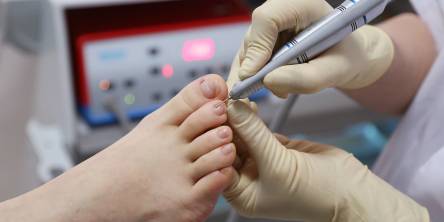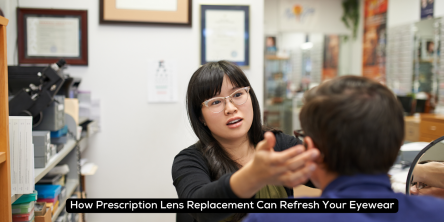A Quick Mobility Scooter Safety Guide

Mobility scooters provide a feeling of liberty to people with mobility problems. Scooters eclipse the effectiveness and facility of wheelchairs and walkers to give comfort and convenience. Because of this, mobility scooters are quickly becoming one of the devices today, utilized by both young and old.
Its increase in popularity, along with the dearth of safety information, has led to an increase in mobility scooter-related accidents. Scooters are a recent innovation, and people haven't had the time or opportunity to acquaint themselves with its rules of usage and safety.
Whether you are looking to buy a scooter on the internet, or already have one, reading and understanding these pointers will guide the way to a productive and secure time with your scooter.
1. Match the scooter to your needs
The first question you need to ask before getting a mobility scooter is: Am I capable of working one? Consult your physical therapist or your doctor if you're able to safely drive a scooter, to assess.
Basic requirements for surgery include good visual and sensory acuity, concentration, coordination, upper body strength and balance.
Don't lie about your abilities. You will not only be endangering yourself, the people around you would be vulnerable to undue threat too.
2. Practice often
Practice makes perfect, and what's true for many talents is true for scooter driving. You need to practice regularly and get used to the sense of moving around using a mobility scooter. Focus on the health as well as your safety. Read up on traffic signs you are likely to come across when you're outdoors so that you'd prepared.
3. Make yourself visible
Make certain drivers and pedestrians can see you. It is not sufficient to paint your mobility scooter a bright shade. Add lights and reflective strips in strategic areas throughout your scooter to guarantee maximum visibility, particularly during the nighttime. Ensure you are highly visible from every angle and side.
4. Follow local rules and regulations
Assess whether it's allowed in your area to operate mobility scooters in general public. There also may be added legislation and ordinances regulating the use of scooters. Research about local speed limits and be sure to follow them. No exceptions.
5. Maintain your mobility scooter
Have your scooter seen by a technician once in a while. A simple checklist to follow: the lights are working, the battery is charging, the tires are correctly inflated, electronic equipment is in good shape, and the security features are working. Cultivate a fantastic working relationship with a professional tech you trust to guarantee regular and effortless access to repair and maintenance.
6. Always wear a helmet
People have died from accidents involving a mobility scooter, and head injuries are the most common cause. Ride your scooter with reassurance by wearing a sturdy helmet, especially when outside.
7. Don't assume
It's true, you've covered your mobility scooters with reflective strips and lighting but that does not ensure against crashes from some other people. Be aware of your surroundings particularly when there are a lot of cars and people. Make eye contact with motorists and pedestrians to signal that you can see them and that they can see you.
8. Stay on sidewalks
Roads are for vehicles. A scooter, like it or not, is not a car or truck. Adhere to the sidewalk whenever possible. Driving on the street with the traffic is a recipe for disaster.
9. Use pedestrian crossings
When you have to cross the road, only do so at a correctly designated and marked pedestrian crossing. Trying to cross the street without warning can take motorists by surprise and they could hit you.
10. Know the area
You are able to follow the most convenient and safe routes utilizing online maps. Keep in mind that the places of kerb ramps and pedestrian crossings, as well as streets without sidewalks so that you'd know where and when to avoid them.
Similar Articles
Essential oils have been used for the longest time for the relief of the pains and other benefits that they pose. These herbal extracts are of great help for wellness because both mental and physical health can be benefited.
In today's fast-paced world, where the hustle and bustle of daily life often overshadow our well-being, embarking on a wellness journey is not just a luxury but a necessity. This journey towards better health is not a one-size-fits-all path but a personal exploration of what works best for each individual
The landscape of medicine is continually evolving, driven by groundbreaking research and innovative discoveries. This article takes you on a journey through the latest research frontiers in medicine, exploring cutting-edge advancements that hold the promise of transforming healthcare and improving outcomes for patients worldwide.
If you work hard and feel that your life could be healthier, you have come to the right place, as we take an in-depth look at ways that you can make your lifestyle a bit healthier.
Uncover the top foot issues managed by podiatrists. Explore prevalent conditions and effective treatment approaches for optimal foot health.
Discover how prescription lens replacement can give your eyewear a fresh new look and improved vision. Upgrade today for a clearer perspective!
Discover the path to a healthier future with Mediterranean diet meal plans. Unlock vitality and wellness through delicious, balanced nutrition
Ever felt parched after a long workout, a night out, or a bout of illness? While plain water is always the best first line of defense, sometimes your body needs more. Enter IV hydration, a growing trend in the wellness world that promises rapid hydration and a range of potential benefits. But is it all it's cracked up to be?
Learn about the advantages associated with employee communication platforms, their most common uses, and how they are changing the healthcare industry right now.









